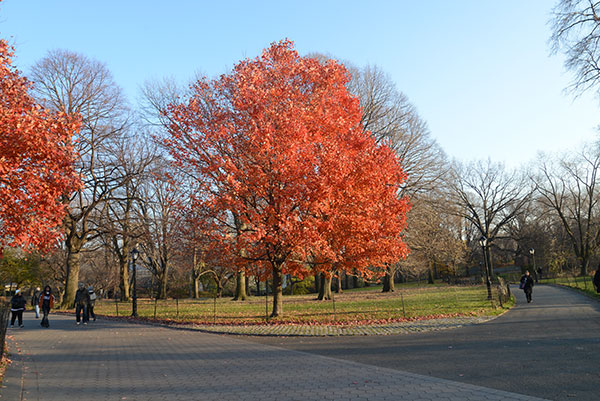Biddle Worthington gave a wonderful lecture on polarizer filters at our Dec. 10th meeting. He was kind enough to share his outline notes from it below:
Outline of Polarizer Filter Lecture
Polarizer filters cut out the polarized light, which can come from many sources, but only two are of concern to the photographer:
1. Light from the blue sky is highly polarized. The process of sunlight causing the open sky to be blue in color is intimately related to the polarizing process. The blue light is not polarized; the balance of the light from the open sky is polarized. Cutting out the polarized light increases the relative intensity of the blue light and causes the sky to appear much bluer.
- Light loss will amount to about 1 ½ stops.
- Filter must be rotated to proper angle to achieve maximum effect
- Effect is maximized when camera is pointed at an angle exactly 90 degrees to the direction of the sun.
- Great care must be exercised when using wide angle lenses. The angle to the sun can vary greatly over the width of the image causing the bluing effect to vary and appear unnatural.
- The polarizing filter will usually increase the contrast in the sky particularly when clouds are visible.
2. Reflections from shiny surfaces (foliage, wood, leather, paint, sides of buildings, water surfaces, etc.) are highly polarized. Perfect reflectors such as mirrors and polished metal do not polarize their reflections.
- Reflections from shiny surfaces are polarized even when the sky is overcast and there is no blue sky, however the polarizing effect is much greater when there is blue sky.
- Outdoor scenes will usually have the contrast reduced and the tonal balance altered or improved by a polarizing filter. This effect is caused by minimizing reflections from shiny surfaces.
- Rotating the filter to point where the sky is bluest will usually cause the reflections to be minimized. It is trickier when there is no visible blue sky.
- Reflections from the surface of a body of water can be minimized to the point where it is possible to see or photograph objects beneath the surface of the water.
- Reflections off of windows or any glass barrier can be minimized so that it is practical to photograph objects behind glass.
Other important points:
- Only use circular polarizing (CPL) filters with cameras that focus and/or meter through the lens.
- Filters that are coated are highly desirable.
- After screwing the filter on the lens; one should rotate the filter in the same direction used to screw it on. Rotating it in the off direction may result in the filter accidently falling off the lens.
- Thin filter frames are desirable to avoid vignetting.


